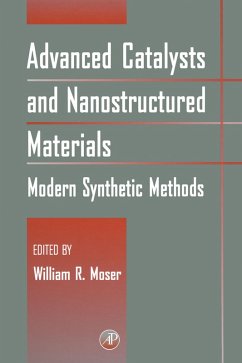Until now, there has been no single book which contains a definitive and comprehensive description of the important technologies for catalyst synthesis within the context of modern materials science. Academic researchers both in the catalytic sciences and materials sciences must have the best synthesis technologies available to accomplish the preparation of solid-state materials of specific structure and morphology. Althugh the emphasis is on new synthetic techniques for catalytic applications, the bookpresents all of the important technologies for the fabrication of electronic and structural ceramics, and superconductors.
- Novel Techniques for Advanced Materials
- Nanostructured Materials Synthesis
- Mesoporous Molecular Sieves
- Pillared Clays
- Heteropoly Acids
- Nanostructured Supported Metal Catalysts
- Nanostructured Metal Oxide Catalysts and Materials
- Nanostructured Zeolite Materials
- Vapor Phase Materials Synthesis
- Sonochemical Materials Synthesis
- Aerosol Methods of Catalyst Synthesis
- Hydrodynamic Cavitational Techniques for Catalyst and Materials Synthesis
- Novel Sol-Gel Methods for Catalyst Synthesis
- Supercritical Methods for Materials Synthesis
- Liquid Crystal Techniques for Mesoporous Materials
- Micelle Techniques for Nanostructured Catalyst Preparation
- Fluidized Bed Techniques in Chemical Vapor Deposition
- Flame Methods of Advanced Catalyst Synthesis
Dieser Download kann aus rechtlichen Gründen nur mit Rechnungsadresse in A, B, BG, CY, CZ, D, DK, EW, E, FIN, F, GR, HR, H, IRL, I, LT, L, LR, M, NL, PL, P, R, S, SLO, SK ausgeliefert werden.









